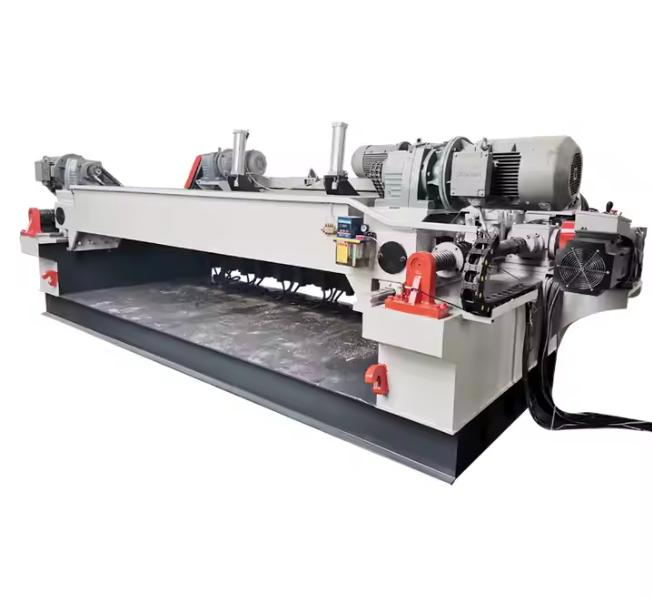Rotary cutting machine is the core equipment in the wood processing industry, and its performance directly affects the yield and quality of veneer. When selecting, it is important to pay attention to the following parameters:
1. Maximum rotary cutting diameter
This parameter determines the maximum size of logs that the equipment can process. If the enterprise mainly deals with large-diameter logs, it needs to choose machines with a rotary cutting diameter of ≥ 400mm (or even higher) to avoid wasting raw materials due to size limitations.
2. Precision of rotary cutting thickness
The uniformity of veneer thickness directly affects the quality of plywood. It is recommended to choose models with a thickness deviation of ≤± 0.1mm. High precision equipment can reduce losses in subsequent sanding processes and improve the yield of finished products.
3. Rotary cutting speed
Production efficiency is directly related to rotary cutting speed. The speed range of mainstream models is 50-200 revolutions per minute, which needs to be selected according to the order quantity. High speed models are suitable for mass production, but they require a high-strength tool holder and a stable transmission system.
4. Motor power
The motor power needs to match the processing strength. When dealing with hardwood or large-diameter logs, it is recommended to use a machine with a power output of ≥ 15kW to ensure sufficient power and reduce the risk of lagging.
5. Degree of automation
Modern rotary cutting machines are generally equipped with automatic feeding and thickness adjustment functions. Choosing models with PLC control systems can significantly reduce labor costs and improve production stability.
By comprehensively evaluating the above parameters, enterprises can accurately match production needs and achieve cost reduction and efficiency improvement.
 How to adjust the cutting thick
How to adjust the cutting thick
01 January,1970
 How much is a hot press machine
How much is a hot press machine
01 January,1970
 Working Principle of Wood Spind
Working Principle of Wood Spind
01 January,1970
 How to repair and maintain the
How to repair and maintain the
01 January,1970
 What are the specifications of
What are the specifications of
01 January,1970
 What Are the Advantages of Mesh
What Are the Advantages of Mesh
01 January,1970